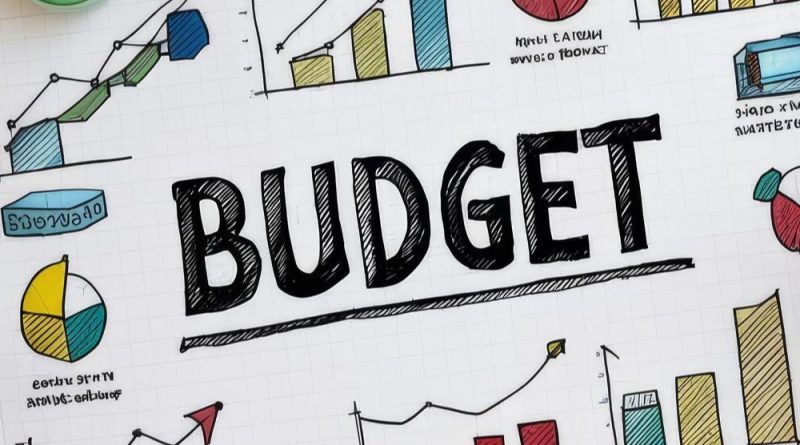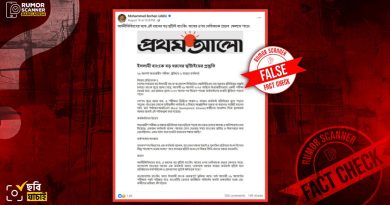Dhaka, June 6, 2025 – Bangladesh’s Tk 7.9 lakh crore ($72 billion) FY2026 national budget, presented by Finance Adviser Salehuddin Ahmed on June 2, has sparked intense debate over its innovative credentials. Unveiled by an unelected interim government amid persistent inflation (9.05% in May 2025) and political transition, the budget claims to prioritize “macroeconomic stability” and “equitable growth.” But does it deliver genuine innovation? The Banking Post fact-checks key claims .
🔍 Claim 1: “Historic Fiscal Discipline”
Verdict: ✅ Partially Innovative
- Contractionary Size: At 0.88% smaller than FY2025, this marks Bangladesh’s first budget reduction since independence. The deficit target (3.62% of GDP) is the lowest in a decade, signaling aggressive fiscal consolidation .
- ADP Cuts: The Annual Development Programme (ADP) allocation drops 13.2% to Tk 2.3 lakh crore, focusing on “high-impact projects.” Critics argue this undermines human capital, with health (-Tk 2,535 crore) and education (-Tk 2,971 crore) facing cuts .
- Financing Shift: Plans to borrow Tk 1.35 trillion abroad (vs. Tk 1.25 trillion domestically) aim to ease banking-sector pressure—a structural improvement .
📊 Claim 2: “Progressive Revenue Mobilization”
Verdict: ❌ Not Innovative
- Unrealistic Targets: Revenue collection aims for Tk 5.64 lakh crore (+8.88% YoY), but historical underperformance (20% deficit in FY2025) and IMF pressure for Tk 5.8 lakh crore expose credibility gaps .
- Regressive Reliance: Indirect taxes (VAT, duties) remain 63% of NBR revenue, disproportionately burdening low-income households. No wealth tax or corporate rate hikes were introduced .
- NBR Restructuring Stalled: A plan to split the tax agency into two divisions—potentially innovative—is paralyzed by staff protests .
🌱 Claim 3: “Sectoral Transformation”
Verdict: ⚠️ Mixed Innovation
Agriculture
- Partial Modernization: Reduced advance income tax (AIT) on agro-processing inputs and duty-free cold storage machinery could cut post-harvest losses. However, ADP allocation fell 14%, and climate-resilient seeds receive no funding .
- Energy Blind Spot: VAT exemption on LNG imports lacks guarantees for fertilizer production gas—a critical gap as 60% of coastal farmland faces salinity .
Textiles & Exports
- RMG Status Quo: Corporate tax unchanged for manufacturers, but no new support to counter US tariffs. The jute/textile ministry gets Tk 4.8 billion (-3.6% YoY) .
- Tech Boost: Software development tools’ import duty cut to 5%—a nod to export diversification .
🌍 Claim 4: “Climate Resilience Pioneer”
Verdict: ❌ Severely Lacking
- Inadequate Funding: Climate allocation stagnates at 0.75% of GDP ($3.6B), far below the 3% ($18.24B) needed annually to implement adaptation plans .
- Coastal Neglect: No new funding for salinity-resistant crops or embankments, despite 39 million coastal residents facing cyclones and displacement .
- Debt Trap: 75% of climate finance comes as loans, increasing fiscal vulnerability .
⚖️ Claim 5: “Social Equity Focus”
Verdict: ❌ Regressive
- Safety Net Streamlining: Programmes reduced from 140 to 95, but coverage remains thin. No minimum wage for informal workers or land reforms for tenant farmers (40% of agricultural households) .
- Black Money Amnesty: Continuation of wealth whitening schemes—widely condemned as corruption enablers .
- Gender Tokenism: Widow allowances increased but no care-work protections or land rights for women .
💡 Innovation Scorecard: Hits vs. Misses
| Policy Area | Innovative Element | Status |
|---|---|---|
| Fiscal Consolidation | Smallest deficit in a decade (3.62% GDP) | ✅ Implemented |
| Tax Administration | NBR restructuring proposal | 🚧 Stalled |
| Agriculture | Duty-free cold storage machinery | ✅ Implemented |
| Climate Financing | Own-resource mobilization roadmap | ❌ Absent |
| Wealth Taxation | Progressive direct tax reforms | ❌ Rejected |
🗣️ Expert Reactions
“Innovation requires courage. This budget stabilizes—not transforms.”
– Dr. Fahmida Khatun, CPD“Reducing ADP for health/education during a demographic boom is anti-innovation. Human capital is Bangladesh’s only real resource.”
– Nahid Islam, National Citizen Party“Duty rationalization for 722 goods aids competitiveness post-LDC graduation. But without export diversification, it’s a half-measure.”
– Lightcastle Partners
📌 The Bottom Line
Bangladesh’s FY2026 budget introduces niche administrative innovations (deficit control, ADP streamlining) but fails systemic reform. Critical gaps remain:
- Revenue Justice: No wealth tax expansion; reliance on regressive indirect taxes .
- Climate Ambition: Allocation <1% of GDP ignores $534B needed by 2050 .
- Human Capital: Education/health cuts contradict “equitable growth” rhetoric .
While pragmatic in crisis management, the budget lacks the vision to redefine Bangladesh’s economic future. As the National Citizen Party notes: “No revolution endures without redistribution” .
Sources: Bangladesh Ministry of Finance, CPD, Lightcastle Partners, The Daily Star, The Business Standard, IMF Conditions (Data current as of June 2025).






